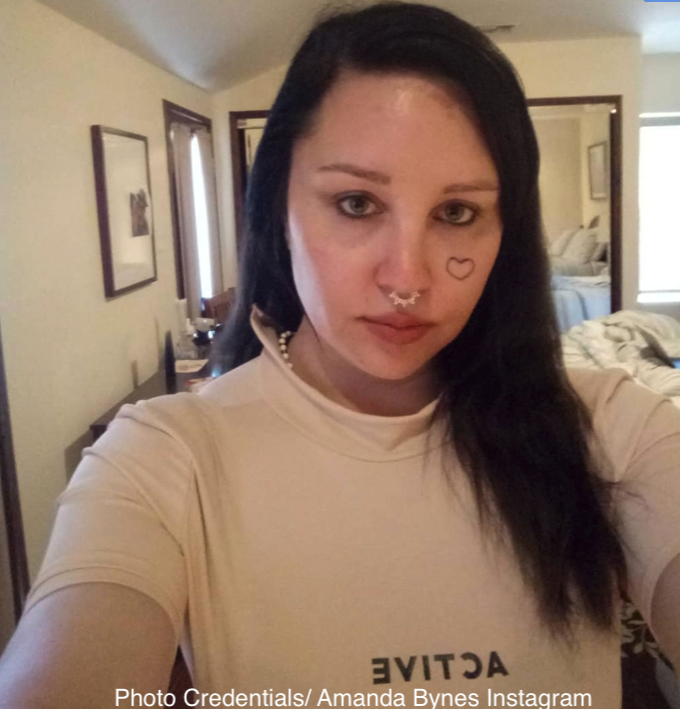Amanda Bynes was the “it” girl of the late ‘90s and early ‘00s. Amanda rose to fame as a child comedian and actress, having been scouted at just 10 years old at a comedy camp in Los Angeles by Nickelodeon producers. After starring in the sitcoms All Thatand The Amanda Show, Amanda eventually made it to the big screen—She’s the Man, Sydney White, What a Girl Wants, and Hairspray are a few of her most noteworthy films. With her poise and charisma, many people thought Amanda would make it far.
Yet Amanda wasn’t as picture-perfect as she seemed. Despite her success as an actress and being at the peak of her career in 2010, she unexpectedly took a hiatus from acting and has yet to return.
What the public did not know at the time was that the star was struggling with mental health, negative body image, and substance abuse issues. As her mental health took a toll, her personal battles soon became highly publicized when she began to display erratic behavior and paranoia. Amanda found herself in jail a number of times, wrote bizarre tweets where she accused her father of abuse, and alleged there was a “microchip in her brain” controlling her actions. She was even put under a 72-hour psychiatric hold when she set a fire at her California home. In 2013, shortly after her hospitalization, Amanda’s parents petitioned the court to put their daughter in a conservatorship.
A conservatorship is a legally appointed relationship where an individual or organization (the conservator) looks after someone who has been deemed incapable of caring for themselves or their finances (the conservatee or ward). Florida law refers to this legal arrangement as a guardianship.
A guardianship is meant to protect and care for certain individuals who cannot make decisions on their own due to age, disability, illness, or some sort of incapacitation. In simple terms, this legal arrangement is put into place for the benefit of the ward. In some cases, a guardian is designated to make personal or medical decisions for the ward, while some guardianships solely oversee the ward’s money and assets. Guardianship laws vary from state to state, and the scope of the guardianship is determined by the extent of the ward’s incapacitation. In Amanda’s case, her parents were responsible for making medical and mental health decisions for her and even controlling her finances for a period of time.
However, on March 22, 2022, a judge in California officially terminated Amanda’s conservatorship after nine years, stating that the basis for which the conservatorship was granted “no longer exists.” Amanda’s case generally remained out of the spotlight, unlike Britney Spears’ public court battle that sparked fanfare and a nationwide #FreeBritney movement.
Ever since Britney’s conservatorship battle drew extensive media coverage, the conservatorship system has been heavily scrutinized by the public. Citing to the manipulation and exploitation Britney had to endure under her father’s control, people began questioning the legitimacy of the conservatorship system.
Nevertheless, Amanda’s experience has shown that not all conservatorships are predatory or exploitative. Unlike Britney, Amanda did not allege conservatorship abuse; instead, Amanda testified that she was ready to live an autonomous life free of any sort of constraint or protection from the court. Furthermore, unlike Britney who faced constant push-back from her father during the termination process, Amanda had the full support of her parents to dissolve her conservatorship. Lynn Bynes—Amanda’s mother and conservator—had encouraged Amanda “to live freely” during the conservatorship, and she agreed her daughter was now capable of making her own decisions.
After demonstrating that she was of sound mental capacity, Amanda has officially regained control of her medical, financial, and personal decisions. She has now regained full freedom and control of her life.
Amanda’s conservatorship experience is a perfect example of how this legal arrangement could be successful in rehabilitating and caring for a person while also giving them the opportunity for autonomous living—a stark contrast to Britney’s case.
Although Amanda’s and Britney’s experiences are remarkably distinct, they nonetheless have sparked conversation about reform of the conservatorship system, especially when it comes to the termination process. Specifically, reform advocates are challenging the paternalistic view courts hold of wards—many judges tend to view incapacitated individuals as incapable of ever caring for themselves and are thus reluctant to dissolve the conservatorship, even when agreed to by both sides. In addition, advocates have pushed for legislation that calls for less restrictive alternatives and looks to conservatorships as a “last resort.”
Almost 1.3 million Americans are under guardianships—some abusive like Britney’s, others more like Amanda’s. Regardless of each arrangement’s circumstances, the guardianship system must be reformed as a whole to ensure that the interests of the wards are fully and wholeheartedly protected.








